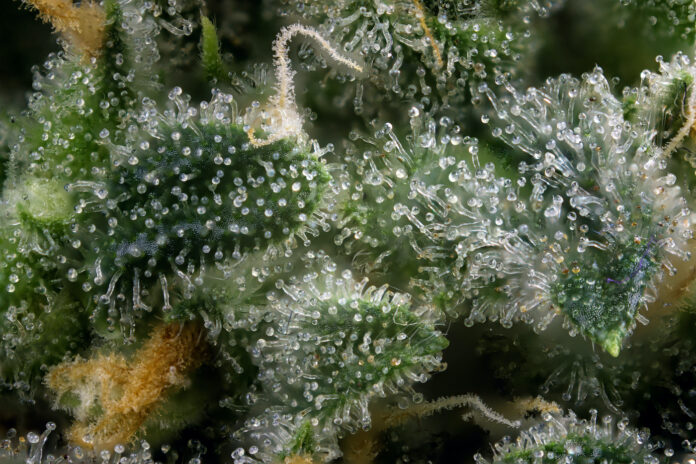Cannabis, a plant with a rich and complex history intertwined with human civilization, offers a vast array of chemical compounds. Beyond the well-known tetrahydrocannabinol (THC), the psychoactive component responsible for the “high,” lies a hidden world of rare cannabinoids with the potential to revolutionize recreational, health, and wellness markets. As we look to the future of cannabis, it’s important to understand the historical context of the plant’s use, the impact of selective breeding on cannabinoid diversity, and the exciting possibilities we’re only starting to discover about the potential of rare cannabinoids.
Throughout history, cannabis has played a multifaceted role in human cultures. Archaeological evidence suggests the plant was domesticated around 12,000 years ago. Traditional medicine systems across the globe have incorporated cannabis for pain relief, inflammation, and a variety of other ailments. Ceremonial and recreational use, driven by the plant’s psychoactive and mood-altering effects, also has been documented for centuries. This historical diversity of use reflects the complex chemical profile of the plant, with a multitude of cannabinoids, terpenes, and flavonoids contributing to its effects.
In the twentieth century, a significant shift took place. Cannabis prohibition in the 1930s, followed by the United States classifying the plant as a Schedule I drug in 1970, severely restricted research and cultivation. After states began legalizing the plant despite federal law, breeding programs shifted their focus toward maximizing THC content, prioritizing high-potency flower with appealing aesthetics. Intrepid breeders, limited by space and resources, inadvertently reduced the overall diversity of cannabinoids, particularly the rare and minor ones. However, with rescheduling potentially imminent in the U.S., we will have more freedom to explore.
To understand the potential hidden within the plant, we can look to landraces, as we have with other long-domesticated crops. Landraces are indigenous plant populations that thrive in their specific environment due to natural selection over generations. These varieties haven’t been bred with a focus on THC, unlike many of the varieties commercially available in the U.S.; therefore, they likely hold the key to unlocking the full spectrum of cannabinoids, because the plants may retain the genetic diversity to reveal diverse cannabinoid profiles. Researchers have identified more than 160 cannabinoids in Cannabis sativa L., highlighting the astounding heterogeneity of these compounds.
The true promise of rare cannabinoids lies in their potential effects both individually and in combination with other cannabinoids, terpenes, and other secondary metabolites. Until recently, most research focused on isolated cannabinoids, primarily THC and cannabidiol (CBD), but others also have been the subject of compelling research. A 2010 study of cannabichromene (CBC) by Abit T. El-Alfy, PhD, and his colleagues at the University of Mississippi indicated significant antidepressant effects in mice. This type of work is crucial to unlocking the potential of the plant; however, a growing body of evidence suggests the “entourage effect” plays a crucial role in how cannabis is experienced. This concept, conceived by Raphael Mechoulam, PhD, and championed by Ethan Russo, MD, proposes the various components of the plant work synergistically to produce a more balanced and potentially more therapeutic outcome than isolated cannabinoids.
The entourage effect has been demonstrated in several studies. A 2023 study by Ryan Vandrey, PhD, and his colleagues at the Behavioral Pharmacology Research Unit at Johns Hopkins explored the interaction between the terpene limonene and THC. Vandrey’s results suggested limonene reduces anxiety caused by THC. This and other work highlights the value of moving beyond single-molecule isolates.
In fact, the rare cannabinoid THCV, when combined with THC, offers fascinating possibilities. A study Phylos recently conducted suggests THCV, when consumed with THC, may counteract some of THC’s unwanted effects, such as fatigue and increased appetite, while promoting motivation and energy. Studies like these open doors for products tailored to specific needs and desired experiences.
The exploration of rare cannabinoids holds immense promise for the future of the industry. Imagine a wider range of products catering to specific mood states, health needs, and desired effects. Consumers and patients could choose between products for relaxation and stress relief, focus and creativity, or pain management and improved sleep. This level of personalization has the potential to significantly improve consumer and pharmaceutical products.
The cannabis plant offers a treasure trove of potential benefits waiting to be unlocked. By delving into the world of rare cannabinoids and studying their individual and synergistic effects, the industry can create a future rich in diversity, offering consumers a more informed and targeted approach to incorporating the plant into their lives. This shift toward a deeper understanding of the whole plant, rather than just its isolated components, paves the way for a more responsible and potentially more beneficial relationship between humans and this fascinating botanical treasure.

Alisha Holloway, PhD, is the chief scientific officer at Phylos, where she leads the research-and-development and breeding groups that focus on discovery and implementation of genetic markers for high-value traits and develop new cannabis varieties via classical and marker-assisted breeding. She holds an assistant professorship appointment at the University of California San Francisco and was the founding director of the Gladstone Institutes Bioinformatics Core Facility.












